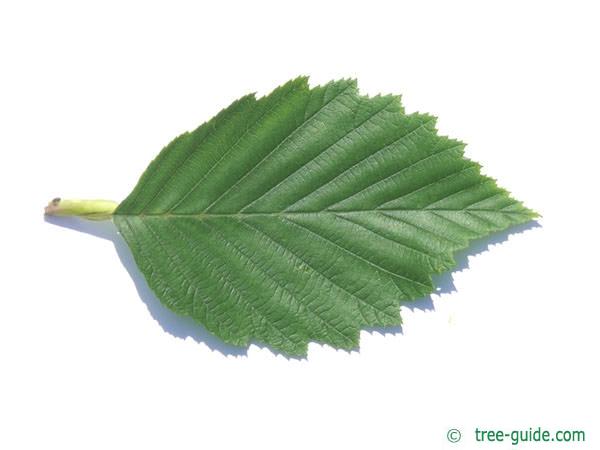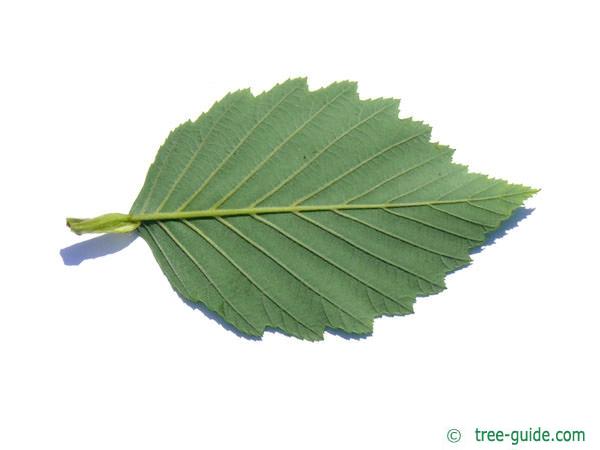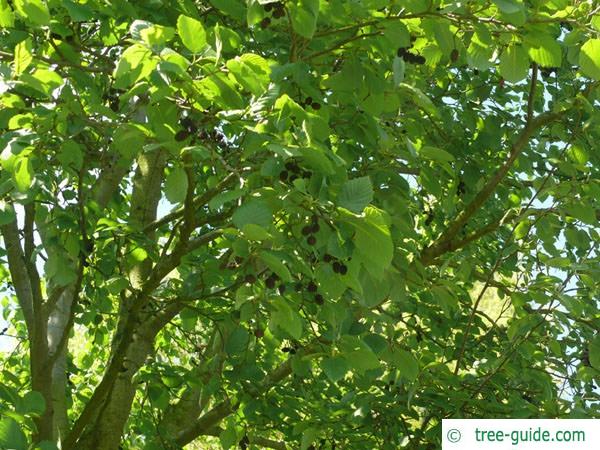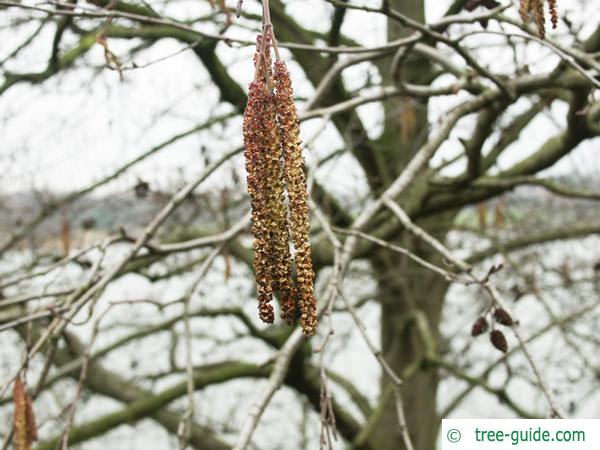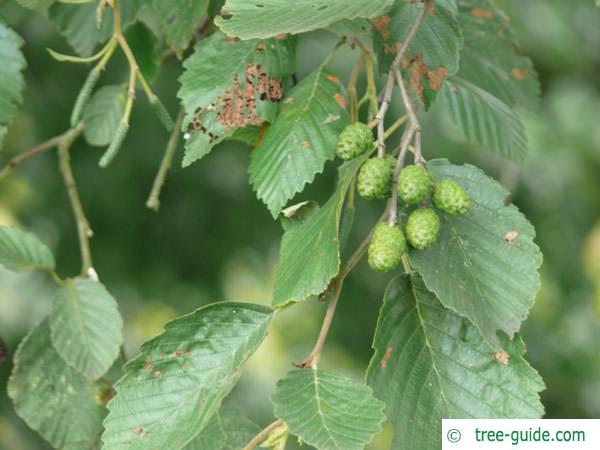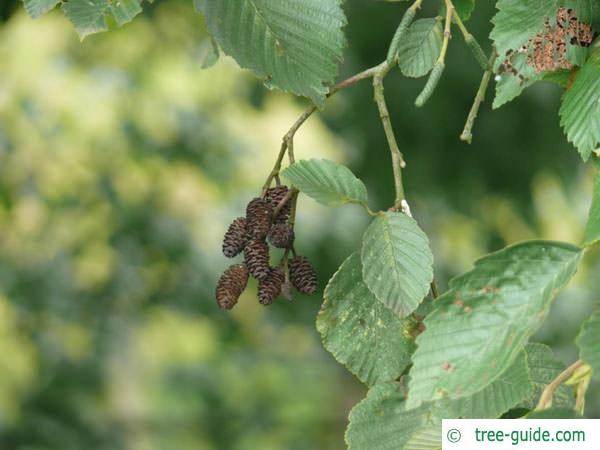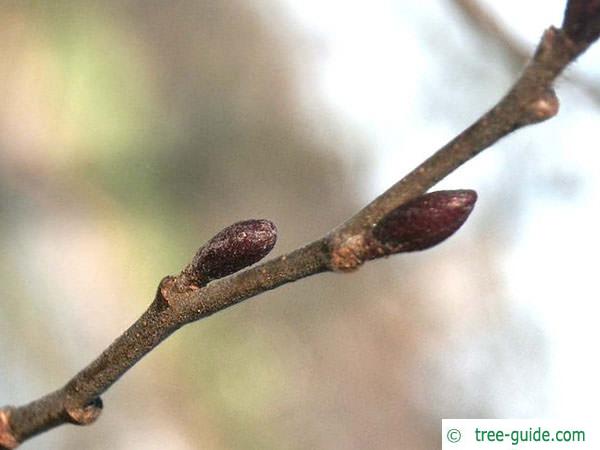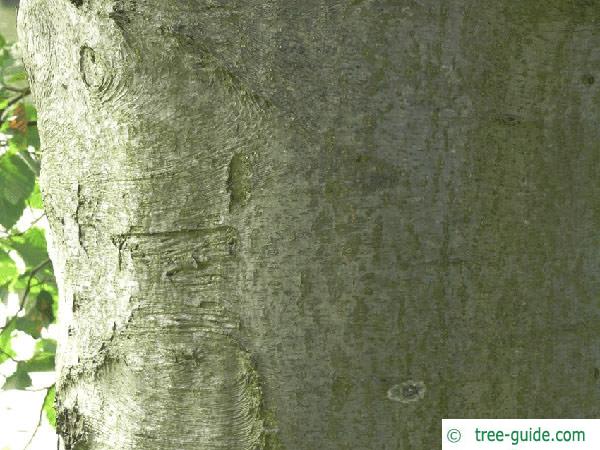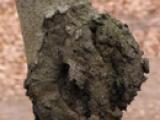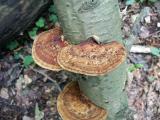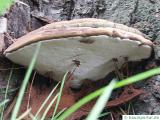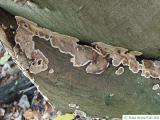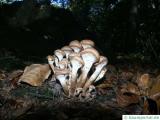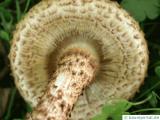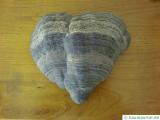Basisdaten
The Gray alder is very common between the Alps and the Urals. It is often planted as a pioneer plant in landfills, waste dumps and to fixing escarpment. The alder can fix nitrogen from the air and release into the ground again, which leads to the improvement of the soil.
Tree profile
The leaves of Gray alder are ovoid and up to 10 cm (3.9 in) long and up to 8 cm (3.2 in) broad. The underside of the leaf is gray felted. The leaf margin is double serrated.
The male flowers (catkins) are conspicuous, the female flowers are inconspicuous.
Small woody cones, first green then dark brown.
The branches are smooth, gray and slightly tomentose.
planting in groups, pioneer plant







